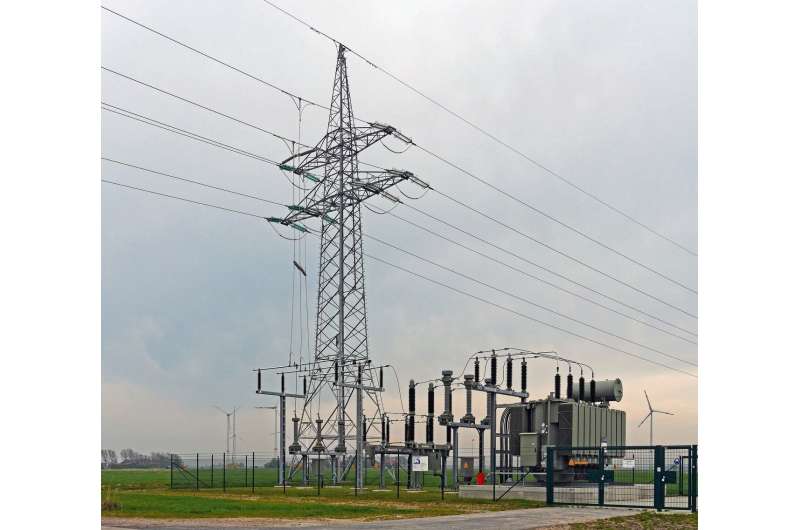
Efforts to tackle climate change and ensure reliable supplies of electricity could be put at risk unless policymakers and companies quickly take action to improve and expand the world’s electricity grids, according to a special report released today by the International Energy Agency (IEA).
Grids have formed the backbone of electricity systems for more than a century, delivering power to homes, factories, offices and hospitals—and their importance is only set to rise as electricity’s role in energy systems increases. But the new report, “Electricity Grids and Secure Energy Transitions,” which offers a first-of-its-kind assessment of grids worldwide, finds signs that they are not keeping pace with the rapid growth of key clean energy technologies such as solar, wind, electric cars and heat pumps. Without greater policy attention and investment, shortfalls in the reach and quality of grid infrastructure could put the goal of limiting global warming to 1.5° C out of reach and undermine energy security, the report warns.
Achieving all national climate and energy goals will require adding or replacing 80 million kilometers of power lines by 2040—an amount equal to the entire existing global grid—according to a detailed country-by-country analysis carried out for the report. Major changes to how grids operate and are regulated are also essential, while annual investment in grids, which has remained broadly stagnant, needs to double to more than US $600 billion a year by 2030.
Issues are already emerging. The report identifies a large and growing queue of renewables projects waiting for the green light to be connected to the grid, pinpointing 1,500 gigawatts’ worth of these projects that are in advanced stages of development. This is five times the amount of solar PV and wind capacity that was added worldwide last year.
“The recent clean energy progress we have seen in many countries is unprecedented and cause for optimism, but it could be put in jeopardy if governments and businesses do not come together to ensure the world’s electricity grids are ready for the new global energy economy that is rapidly emerging,” said IEA Executive Director Fatih Birol. “This report shows what’s at stake and needs to be done. We must invest in grids today or face gridlock tomorrow.”
The role of electricity is set to continue growing strongly, increasing the demands on grids. The adoption of new technologies such as electric cars and heat pumps means electricity is expanding into realms previously dominated by fossil fuels.
Meanwhile, countries are adding renewable energy projects at a fast rate—requiring more power lines to connect them to electricity systems and high-functioning distribution grids to ensure reliable supplies for end customers. This includes the digitalization of distribution grids and enabling more flexibility through demand response and energy storage.
A new scenario developed for the report, the Grid Delay Case, examines what will happen if grid investment is not scaled up quickly enough and regulatory reforms for grids are slow. It finds that cumulative carbon dioxide (CO2) emissions between 2030 and 2050 would be almost 60 billion tons higher due to a slower rollout of renewables that results in higher fossil fuel consumption. This is equivalent to the total CO2 emissions from the global power sector over the past four years. It would put the global temperature rise well above the Paris Agreement target of 1.5 °C, with a 40% chance of exceeding 2° C.
The report identifies several strategic actions that can make a difference. These include expanding and strengthening grid interconnections within countries, between countries and across regions to make electricity systems more resilient and allow them to better integrate rising shares of solar and wind power. The report recommends that governments back large-scale transmission projects to ensure grids are prepared for further strong growth in renewable power. And it urges grid developers and operators to embrace digitalization to enable the grids of the future to be more resilient and flexible.
The need for decisive action is urgent because of the long lead times for modernizing and extending grids. New grid infrastructure often takes 5 to 15 years to plan, permit and complete—compared with 1 to 5 years for new renewables projects and less than 2 years for new charging infrastructure for electric vehicles.
Improving and expanding grid infrastructure in countries worldwide will require stronger international collaboration. Emerging and developing economies, excluding China, have seen a decline in grid investments in recent years, despite robust electricity demand growth and ongoing efforts to meet energy access goals.
“Ensuring the developing world has the resources it needs to build and modernize electricity grids is an essential task for the international community,” Dr. Birol said. “By mobilizing financing, providing access to technology and sharing best practices on policies, leading economies can help improve people’s lives, strengthen sustainable development and reduce the risks of climate change.”
























